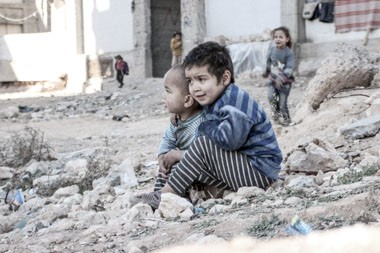Syrian: The Necessity of a More Child Centered Approach
To begin, actors should focus on the children suffering in Syria, often the most vulnerable and harmed by the conflict. In 2016, in Syria, one in four conflict related deaths was that of a child. UNICEF corroborates that 2017 was the deadliest year for young Syrians, with a war that failed to distinguish between child and combatant. Geert Cappaleare, the UNICEF director for the Middle East and North Africa furthers that “the protection of children in all circumstances that was once universally embraced – at no moment have any of the parties accepted.” The World Health Organization notes that the use of explosive hazards, such as mines, has harmed over 3 million children in Syria. While Syrian children have been unfortunate victims of the conflict, even the Syrians that live face numerous obstacles.

In the Syrian war, there have been numerous war crimes committed. Namely, hospitals and schools are under consistent attack, causing children to lose vital access to health services and education. Even for Syrian children that escape their home country to other nations, many also lack access to education in their destination countries Accordingly, experts have termed young Syrians as a lost generation. 43% of Syrian children in neighboring countries still cannot access education, due to a shortage of international funds as well as restrictions placed by host countries on Syrian refugees. Many Syrian children are working to support their families, for salaries that are much less than the minimum wage. In some families, Syrian children may be the only breadwinner because children are more vulnerable and easily exploitable by employees, particularly for lower wages and subpar working conditions. Working Syrian children often report physical abuse and sexual harassment. Those who don’t seek jobs in the formal sector may even be incentivized to enjoy the war. Parties in the conflict may offer salaries of $400 a month in order to encourage recruitment. Yet, since 2014, all parties involved in the conflict have illegally recruited children as young as 7 years old, making them pawns in a larger, violent game.

Taking a child centered framework means ceasefires must be enforced by all sides and safe refuge for children should be emphasized. Political actors should not make schools and hospitals, where children often reside, targets of their militaristic attacks. With this child centered lens, host governments of refugees should recognize that their restrictions on refugees drive young children into exploitative working conditions; therefore, focusing on children means developing adequate laws and protections for them and their parents. For aid agencies, a child centered framework means giving children immediate attention because by neglecting Syrian children, there is no future for Syria. This war may be without an end, but the senseless tragedies and suffering of children must be prioritized.
